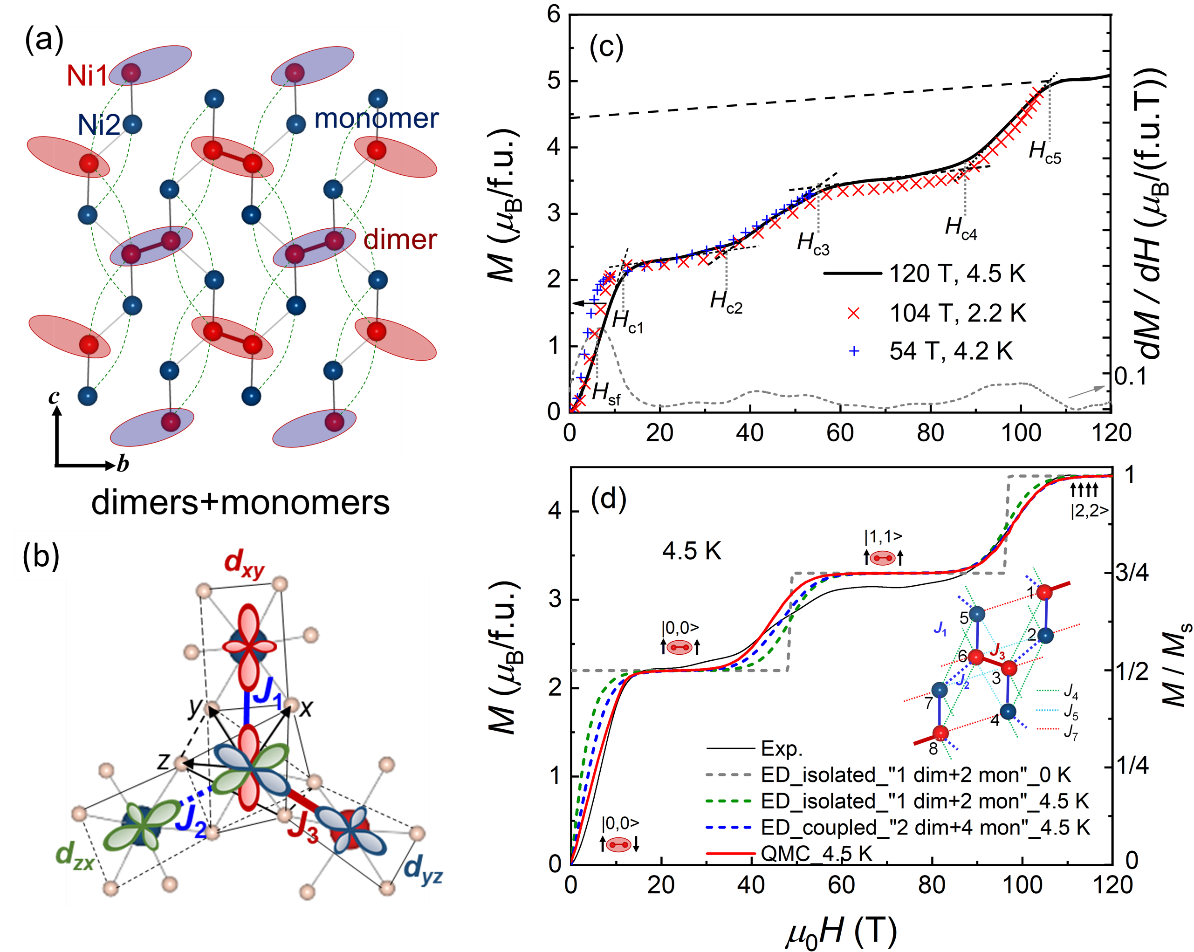
(a) “dimers+monomers” model. (b) Local coordinate axes (x, y, z) and three t2g orbitals (dxy, dyz, dzx). (c)M(H) curve and its dM/dH at 120 T (4.5 K). (d) ED- and QMC-simulated M(H) curves.
Background
Reduction of dimensionality and clusterization-related physics renew interests in quantum magnets. Ni2V2O7 is an alternating skew chain antiferromagnet in structure, while magnetically it presents a coexistence of the classical antiferromagnetic long-range order with a wide 1/2 magnetization plateau. The origin of 1/2 plateau was not well explained.
What we discover?
In this paper, we have measured the ultrahigh field magnetization of Ni2V2O7 up to 120 T. Inaddition to the wide 1/2 plateau within 11.7-34.8 T, a new and wider 3/4-like plateau within 55.6-87.0 T is observed. Density functional theory (DFT), exact diagonalization (ED) and quantum Monte Carlo (QMC) simulation are utilized to interpret the plateaus. The results suggest a significant “dimerization” of magnetic ions driven by particular orbital overlap along the Ni1-Ni1 bond.
Why is this important?
According to our results, Ni2V2O7 is an antiferromagnet composed of Ni1 dimers plus Ni2 monomers rather than 1D chain magnet. The magnetization process can be described withthe nearest exchanges J1/kB= −1.0 K, J2/kB= 6.3 K, J3/kB= −78.5 K and the next nearest exchanges J4/kB= −1.5 K, J5/kB= −0.4 K, J6/kB= 5.4 K and J7/kB= −0.2 K.Our results are expected to arouse continuous experimental and theoretical interests in low-dimensional quantum magnets.
Why did we need WHMFC?
The high-field magnetization up to 54 T was measured in the WHMFC. This measurement is necessary to calibratethe magnetization measured using ultrahigh field at 120 T.
Who did the research?
J. J. Cao,1Z. W. Ouyang,1X. C. Liu,1T. T. Xiao,1Y. R. Song,1J. F. Wang,1Y. Ishii,2
X. G. Zhou,2and Y. H. Matsuda2
1Wuhan National High Magnetic Field Center & School of Physics, Huazhong University of Science and Technology,Wuhan430074,P. R. China.
2Institute for Solid State Physics, University of Tokyo, Kashiwa, Chiba 277-8581, Japan
Acknowledgments
This work was supported by the National Natural Science Foundation of China (Grant Nos. U20A2073 and 11874023).
link:https://link.aps.org/doi/10.1103/PhysRevB.106.184409
